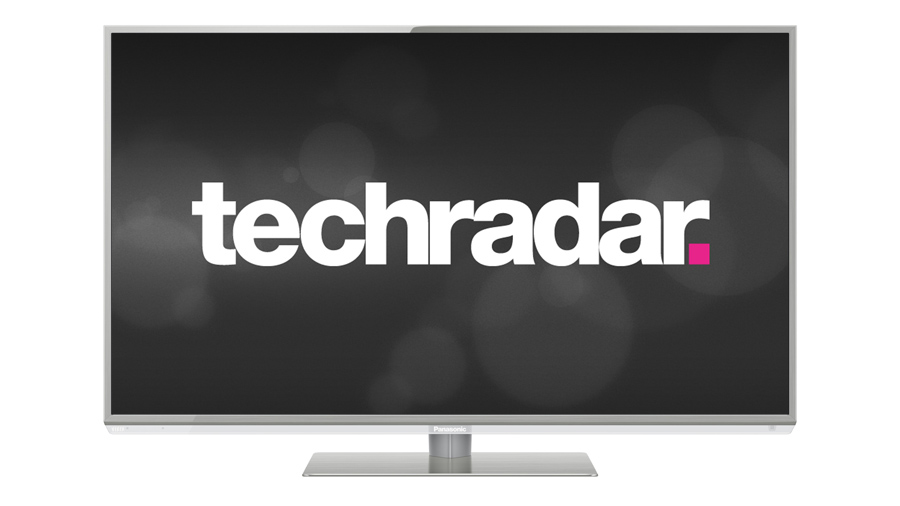Why you can trust TechRadar
There's no doubting that the TX-L42DT50B is one of the easiest TVs to use. Available on all Panasonic TVs for 2012, but barely mentioned or reviewed anywhere thus far, is Voice Guidance.
Designed primarily for blind and partially sighted people, though of great use to those with technophobia (does anyone still like techno?) or others struggling to understand modern TVs' increasingly complex features, Voice Guidance can be toggled on and off in the TX-L42DT50B's Sound menus.
Press Guide and the TV hoots before launching into what can be a quite lengthy female voiced explanation: "TV guide, today, 3, ITV1, The Jeremy Kyle Show, 09:25-10:30, press OK to select" is extended quite drastically if you engage 'Beginner' mode; "Use left or right to select programme, USE up or down to change channel, press green to advance 24 hours or red for previous 24 hours, future programmes will be added to the timer programming list, current programmes will provide an option to view, press yellow to list current channels by genre, press blue to list channels by category, press exit to leave and return to TV". Woah there!
If that's all a bit of a mouthful, it does add clarity, and serves as a reminder of how utterly nonsensical TVs can be to many viewers, though we're sure most users of Voice Guidance will be using the more concise 'Expert' mode within a few hours.
Although the support for the digital EPG is quite an achievement, Voice Guidance doesn't stretch to the TV's main user interface or the media player functions; press 'menu' on the remote and you'll only get an utterance along the lines of 'Voice Guidance not supported. Press exit to view'. Still, many functions are covered, including volume and the input list - and we've seen the latter fox many a fully sighted user.
Although it does issue system instructions such as 'software update available' and even 'USB drive detected', the TX-L42DT50B's core picture/sound/settings menus of the TV aren't supported by Voice Guidance.
Nor is VIERA Connect, though at least that remains the easiest to use of all the smart TV platforms around. The limit of seven over-size icons per page is perhaps its bravest, and best design principle since it helps avoid VIERA Connect feeling overcrowded. Still, it is worth spending some time customising to get your most often used apps onto the front page, because scrolling between panels is a bit long-winded.
Sign up for breaking news, reviews, opinion, top tech deals, and more.
The TV's central user interface as a whole isn't bad, though we're still wondering why the gesture-based, and incredibly easy to use operating system used on Panasonic's new Blu-ray players isn't employed yet on its TVs. Perhaps it's waiting in line for next year.
Sound
Despite its slim build the TX-L42DT50B somehow manages decent sonics. The array here, called V-Audio Pro Surround 2.1, comprises two lots of eight speakers on the front backed-up by a small subwoofer.
Neither V-Audio, V-Audio Surround nor V-Audio ProSurround have any effect in terms of rear effects, and are difficult to compare since they all keep dialogue central and clear, and generally impress. Detail is handled well, with an obvious emphasis on the treble part of the mix, though there's enough low frequency to make music at least listenable (when in 'Music' mode - it sounds clipped elsewhere).
Perhaps it's the strong treble skill that has the side-effect of making dialogue on a BBC iPlayer stream - in this case Formula 1 highlights - seem almost robotic.
Value
There's no doubt that this is an expensive TV that looks the part and has the features to match, with one exception. Without any 3D glasses in the box a lot of users won't take advantage of the TX-L42DT50B's excellent 3D images, which is a massive shame, and leaves it looking a little overpriced.
For some that impression will be backed-up by the lack of the likes of Lovefilm and other on-demand services on VIERA Connect, but personally we're more than happy with the platform.

Jamie is a freelance tech, travel and space journalist based in the UK. He’s been writing regularly for Techradar since it was launched in 2008 and also writes regularly for Forbes, The Telegraph, the South China Morning Post, Sky & Telescope and the Sky At Night magazine as well as other Future titles T3, Digital Camera World, All About Space and Space.com. He also edits two of his own websites, TravGear.com and WhenIsTheNextEclipse.com that reflect his obsession with travel gear and solar eclipse travel. He is the author of A Stargazing Program For Beginners (Springer, 2015),
